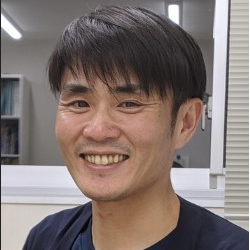Molecular Mechanisms of Periodontal Disease 2.0
A special issue of International Journal of Molecular Sciences (ISSN 1422-0067). This special issue belongs to the section "Molecular Pathology, Diagnostics, and Therapeutics".
Deadline for manuscript submissions: closed (31 January 2022) | Viewed by 40540
Special Issue Editor
Interests: stem cells; bone biology; signal transduction; cytokines
Special Issues, Collections and Topics in MDPI journals
Special Issue Information
Dear Colleagues,
Periodontitis is a chronic inflammatory disease characterized by lymphocytic infiltration and alveolar bone destruction, along with tooth loss. Accumulated lines of evidence suggest that such destructive inflammation is elicited by host innate and adaptive immune response to periodontal biofilm-associated multiple microorganisms. In addition, several inflammatory cytokines produced from lymphocytes, leukocytes, fibroblasts, and gingival epithelial cells in the context of host immune responses have been identified as key molecules inducing periodontal tissue destruction. More specifically, proinflammatory cytokines, including IL-6 and IL-17, facilitate the RNAKL expression level in fibroblasts or lymphocytes, which results in the induction of bone resorption. However, despite advances in our understanding of its etiology, scientific endeavors to fight against periodontal disease have progressed little. Accordingly, it is required to deepen our understanding of a more detailed molecular mechanism of the immune system against oral microorganisms to develop preventive or therapeutic regimens. To that end, this Special Issue, which is a continuation of a previous successful issue on the molecular mechanisms of periodontal disease, focuses on novel immune reaction systems from the molecular level (microbe, microRNA, inflammatory cytokine signaling cascade, etc.) to the cellular level (Th1, Th2, Th17, Treg, and B cells activity, osteoclastogenesis, dendritic cells and monocytes immune response, the role of fibroblasts/epithelial cells in inflammation, etc.) in mouse periodontal disease models.
Thanks to everyone, our first special issue, “Molecular Mechanism of Periodontal Disease,” was a huge success. Hopefully, we can proceed with understanding periodontal disease to the higher stage with the relaunched special issue.
Prof. Dr. Mikihito Kajiya
Guest Editor
Manuscript Submission Information
Manuscripts should be submitted online at www.mdpi.com by registering and logging in to this website. Once you are registered, click here to go to the submission form. Manuscripts can be submitted until the deadline. All submissions that pass pre-check are peer-reviewed. Accepted papers will be published continuously in the journal (as soon as accepted) and will be listed together on the special issue website. Research articles, review articles as well as short communications are invited. For planned papers, a title and short abstract (about 100 words) can be sent to the Editorial Office for announcement on this website.
Submitted manuscripts should not have been published previously, nor be under consideration for publication elsewhere (except conference proceedings papers). All manuscripts are thoroughly refereed through a single-blind peer-review process. A guide for authors and other relevant information for submission of manuscripts is available on the Instructions for Authors page. International Journal of Molecular Sciences is an international peer-reviewed open access semimonthly journal published by MDPI.
Please visit the Instructions for Authors page before submitting a manuscript. There is an Article Processing Charge (APC) for publication in this open access journal. For details about the APC please see here. Submitted papers should be well formatted and use good English. Authors may use MDPI's English editing service prior to publication or during author revisions.
Keywords
- periodontitis
- immune response
- periodontal pathogens
- bone resorption
- RANKL






